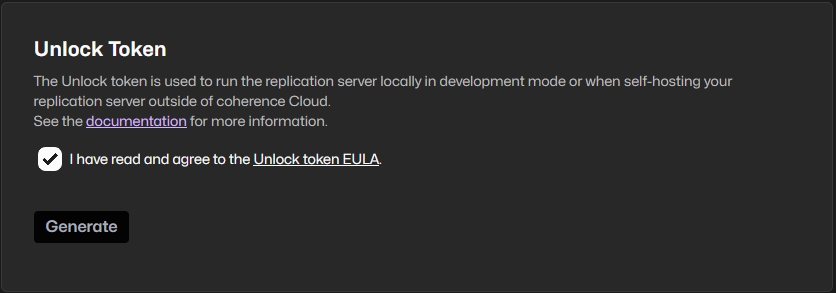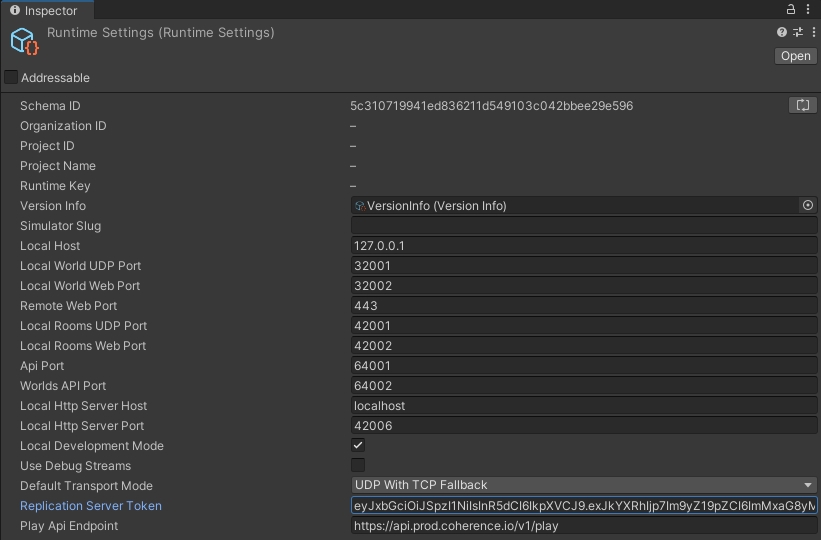Replication Server API
This page illustrates a few API you can use to interact with the Replication Server.
Connection to a Replication Server
When the Replication Server is running, you connect to it using the Connect method.
Connect to a local Replication Server
using Coherence;
using Coherence.Connection;
using Coherence.Toolkit;
using UnityEngine;
public class ConnectToLocal : MonoBehaviour
{
void Start()
{
var Bridge = FindAnyObjectByType<CoherenceBridge>();
var endpoint = new EndpointData
{
region = EndpointData.LocalRegion,
host = "127.0.0.1",
port = 32001,
schemaId = RuntimeSettings.instance.SchemaID,
};
Bridge.Connect(endpoint);
}
}After trying to connect you might be interested in knowing whether the connection succeeded. The Connect call will run asynchronously and take around 100 ms to finish, or longer if you connect to a remote Server.
Respond to connection events
To connect with multiple Clients locally, publish a build for your platform (File > Build and Run, details in Unity docs). Run the Replication Server and launch the build any number of times. You can also enter Play Mode in the Unity Editor.
Unlock token
By default, the number of players that can connect to a locally hosted Replication Server is limited to 100.
This restriction can be lifted by supplying the SDK with an unlock token. The token can be generated in the Settings section of your project dashboard at coherence.io.

Once you have the token, it needs to be added to the coherence RuntimeSettings (Assets/coherence/RuntimeSettings.asset):

The unlock token will now be automatically passed to all the Replication Server instances started via Unity editor or the Coherence.Toolkit.ReplicationServer API.
Was this helpful?

